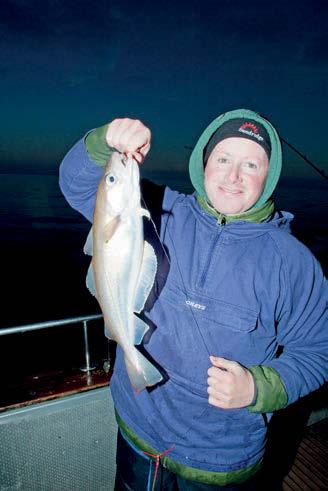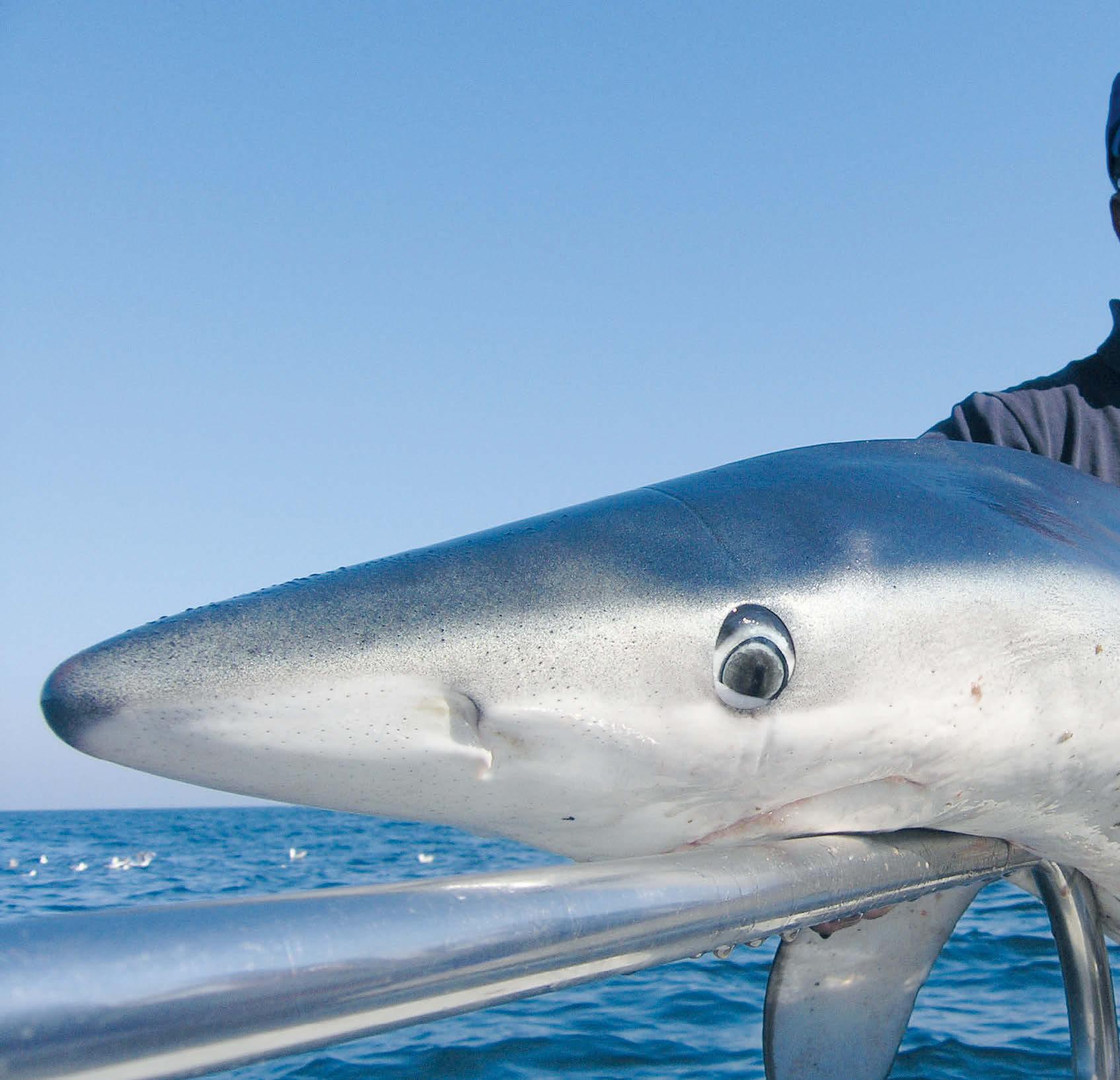
5 minute read
Dab
from Sea Angler Guides #5
by KELSEY Media
The humble dab has saved many a day afloat when traditional winter species don’t play ball

Regardless of their sweet taste, dabs are not at the top of our target list when planning a great day afl oat. ey are the smallest of the UK fl atfi sh and, despite weights recorded in excess of 2lb, are generally widespread in the 8oz bracket. A dab that exceeds 1lb would be considered a great catch, unless you’re fi shing over in Norway or Iceland, where the average size is 1lb plus.
Often, when the winter cod fi shing has died away and even the whiting are scarce, the good old dab can turn a slow day into an action packed session – you just have to scale down your gear and actually target them.
EASY TO IDENTIFY

e dab is easily identifi able when compared to other fl atfi sh such as fl ounder and plaice. ey have a white underside and normally a light brown topside. Dabs have light spots on the top that are more a yellowy orange colour than the striking red of a plaice, yet on odd occasions they are still misidentifi ed by anglers, especially when small. A key way to be certain that it’s a dab is to run your fi ngers along its back, from the tail to its head – dab’s have a rough skin to touch with quite a rough and pronounced lateral line. e fl ounder has a mottled greenish brown colour on its topside, occasionally with dull red spots. A plaice on the other hand has a smooth topside when rubbed either way.
Commonplace around the whole of the UK, dabs can be routinely found in waters between 20 and 40 metres in depth. e habitat of a dab can vary, but most are caught over clean sand or mud.
If you travel to Norway or even the northern ports of the UK, the chances are that you’re likely to encounter the ‘long rough dab’, which is very similar to the regular dab, except it is much longer and slimmer in appearance.

SOFT PLASTICS
Dabs have a varied diet that includes small crustaceans, worms and fi sh. As anglers, we tend to use various worm baits often tipped with fi sh or squid. Just like other fl atfi sh, dabs will readily attack a moving bait, and it’s quite common to catch more dabs on the drift than laying at anchor. is is further quantifi ed when reading various articles and exploits of other anglers where they concentrate on LRF methods, and in particular the use of soft plastic baits, its noticeable the number of small fl atfi sh being caught on slightly twitched baits. Boat anglers can adopt similar tactics with soft plastic baits during a day afl oat whether at anchor or indeed on the drift for targeting all manner of fl atfi sh. I’ve seen dabs caught on Isome worms before over in Norway, so I know the tactic works.
Run your fi nger from the tail to the head of a dab and you’ll feel how rough their skin is

The average size of dabs in Norway is over 1lb. You will also encounter plenty of long rough dabs there too
Isome has been proven to work for dabs, especially when fi shed in shallower water on the drift


TACKLING UP
e choice of rod and reel is dependent on the ground, depth of water and tide of the particular mark that you are fi shing. It goes without saying that the lighter you can fi sh, the more fun you’re going to have.
A 7-35g lure rod matched with a 3000-sized fi xed spool reel loaded with 10lb braid would be my choice, but in some cases you can go even lighter and use dedicated LRF tackle. For general boat fi shing, though, if you can’t get away with using less than 3oz to hold bottom, I would suggest a 12lb class boat rod with a really soft tip.
Hook choice is crucial, bearing in mind that the vast majority of baits being used will be wormbased, so a longer shank hook will help with good presentation. With dabs having fairly soft mouths, a very fine wire hook can be used when targeting them specifically – something like a fine wire Aberdeen pattern in size 2 is a good starting point.
When looking for dabs your chances of a double or triple shot are usually good, so two or three-hook rigs are the norm. It’s important to keep the rig as tight to the seabed as possible. A three-down scratching rig fished off a boom is the correct rig choice. e rig body needs to be around 4ft in length with the three hooks spaced equally along the body. 40lb body and 20lb fluorocarbon hooklengths are ample enough for all that may take the baits. However, additional care needs to be taken when landing anything bigger than a dab!
Flatfish respond to attractors, plaice especially are regularly caught using a vast array of colourful beads and sequins on the snoods in addition to the baits. Dabs are no different, and 5mm beads in either a bright yellow and red, or red and luminous combinations have been proven to work well.

Dabs will readily hit baits with attractors added
Ragworm and rag tipped with squid can be a lethal cocktail for dabs from a variety of ports. Small harbour rag (maddies) bunched together can result in some very good-sized specimens, especially when fished on the drift over undulating sandbanks. Similar to fishing for plaice, the worms are bounced slowly over the depressions seeking out the ambush points of the larger dabs.
In many areas, especially during the winter months, sticky black lugworm has to be one of the best baits available.
Sticky black is the name given to black lug that has been frozen, thawed and re-frozen a number of times. e process dries out the worm and leaves it very sticky to touch and also with a very strong smell. e worm can be used in a couple of different ways, either threaded up the hook and just passed over the eye of the hook and then tipped off with a slither of mackerel or squid. is slither helps prevent the worm from slipping along the gape of the hook and masking the point. Alternatively, with a baiting needle and some elastic, you can prepare some black lug sausages to offer a solid piece tipped off once again with mackerel or squid. n
Sticky black lugworm is a top dab bait











